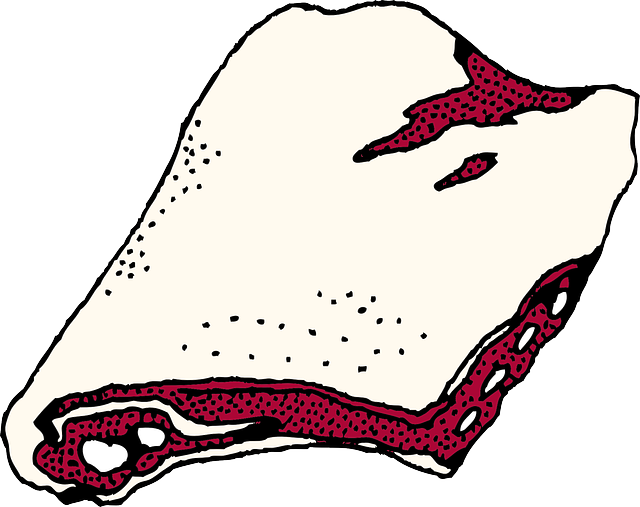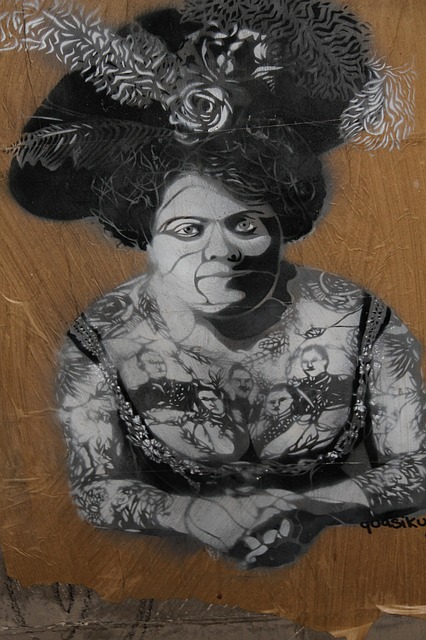مبتر صيني
| ||||||||||||||||||||||||||||||||||||||||||||||||||||||||||||||||||||||||||||||||||||
| ||||||||||||||||||||||||||||||||||||||||||||||||||||||||||||||||||||||||||||||||||||
المقاطع الصينية أوالحروف الصينية Chinese characters، هي رسوم معنوية تستخدم لكتابة الصينية (حيث يمكن حتى يُطلق عليهم hanzi汉字/漢字 "مبتر الهان") واليابانية (كانجي). مثل تلك المقاطع يمكن حتى تستخدم أيضاً، بالرغم من نه أقل كثيراً، في الكورية (هانجا)، وكانت تستخدم سابقاً في الڤيتنامية (چونوم) وعدد من اللغات الأخرى. تشكل المقاطع الصينية أقدم نظام للكتابة استخدم باستمرارية في العالم.بفضل استخدامها على نطاق واسع في الصين واليابان، فالمقاطع الصينية من أكثر نظم الكتابة الأوسع استخداماً في العالم.
يقدر عدد المقاطع الصينية بعشرات الآلاف، معظمها متغيرات گرافيكية قاصرة استخدمت فقط في النصوص التاريخية. في دراسات عقدت في الصين ظهر حتى فهم القراءة والكتاابة الوظيفية تستزم الإلمام بما بين ثلاثة وأربع ألف مبتر.الأشكال المبسطة لبعض المقاطع يشيع استخدامها في الصين وسنغافورة؛ بينما المقاطع التقليدية أكثر شيوعاً في تايوان، هونگ كونگ وماكو، واليابان، والتي تستخدم بعذ المقاطع المبسطة الخاصة بها (شينجينتاي).
في الرسوم الصينية المعنوية، تكون المقاطع صوتية مركبة بشكل كبير، جميع منها يطابق مبتر لفظي منطوق يحمل معنى مختلف. ومع ذلك، فأغلبية الحدثات الصينية اليوم تتكون من مبترين أوأكثر. حوالي 10% من الحدثات الأصلية تحتوي على مبترين لفظيين بدون معاني منفصلة، على الرغم من ذلك فهي تخط بمبترين. بعض المقاطع، مركبة بصفة عامة، تمثل حدثات ذات مقاطع لفطية متعددة أوحتى عبارات، ومن ثم فيعد هذا استثناءاً وهوبصفة عامة غير رسمي.
Cognates in the several varieties of Chinese are generally written with the same character. They typically have similar meanings, but often quite different pronunciations. In other languages, most significantly today in Japanese, characters are used to represent Chinese loanwords, to represent native words independent of the Chinese pronunciation, and as purely phonetic elements based on their pronunciation in the historical variety of Chinese from which they were acquired. These foreign adaptations of Chinese pronunciation are known as Sinoxenic pronunciations, and have been useful in the reconstruction of Middle Chinese.
الحروف الصينية (الحروف التقليدية: 漢字 ، الحروف المبسطة: 汉字، البينين : hànzì) هي رموز تستخدم في كتابة الصينية، اليابانية والكورية. لم تعد الحروف الصينية مستخدمة في اللغة الفيتنامية حيث كانت مستخدمة حتى القرن العشرين. وقد اختفت في كوريا الشمالية، حيث استبدلت تماما بالهانغول Hangul ولا تستخدم إلا لماما في كوريا الجنوبية.
تسمى الأحرف الصينية hànzì في الصينية الماندرينية، الكانجي في اليابانية، الهانجا أوالهانمون في الكورية وhán tự أوchữ nho في الفيتنامية (كل هذه الأسماء ما عدا الاسم الأخير هي نطق الحرفين اللذين تخط بهما حدثة "الأحرف الصينية" وهما 漢字 في هذه اللغات).
تتشكل جميع حدثة صينية من حرف واحد أوأكثر ("字" zì)، فمثلا حدثة hànzì تتشكل من حرفين. يمثل جميع حرف وحدة مبترية منفردة في جميع التشكيلات المنطوقة من اللغة الصينية التي لازلت موجودة لحد الآن وكذلك الأمر بالنسبة للكورية. واستثناء هذه القاعدة هوالحرف 児 ذوالصيغة المبسطة 儿، الذي يمثل الصوت -r الذي يلحق ببعض الحدثات في الماندرين.
على خلاف الاعتقاد السائد، قليل من الأحرف الصينية رموز صورية رغم حتى هذه الأخيرة حروف للحدثات الأكثر تداولا. فمثلا، الحرف الصيني الذي يعني "مظلة" هورمز صوري لمظلة : 傘 (伞) san. معظم الحروف مبنية على حروف أخرى. مثلا : "按" والذي ينطق àn ويعني العمل "ضغط"، يضم الحرف "安" الذي يعني "السلام" والذي يستخدم في نطق هذه الحدثة، والحرف "手" الذي ينطق shǒu ويعني "يد" أي حتى هذا العمل يؤدى باليد.
في بر الصين الرئيسي، تم تشكيل آلاف الحروف المبسطة بين سنتي 1956 و1964 وذلك لمحاربة الأمية. وهذا ما خلق فرقا أساسيا بين مجموعتي الأحرف القائمة الآن. تستخدم الأحرف التقليدية في تايوان، هونغ كونغ، ماكاووماليزيا بينما تستخدم الحروف المبسطة في البر الصيني، سنغافورة وأيضا في ماليزيا.
لا ترتبط اليابانية ولا الكورية ولا الفيتنامية برابط لساني مع الصينية ولذا فقدم تم تبني عدة تعديلات على الأحرف الصينية لتلائم هذا اللغات ذات القواعد والنطق المختلفين.
أساسيات الهجريب
| التصنيف | النسبة المئوية للحروف (تقريبية) |
|---|---|
| Phono-semantic compounds | 82% |
| Ideogrammic compounds | 13% |
| Pictograms | 4% |
| Ideograms | Few (less than 1%) |
| Transformed cognates | Few |
| Rebus | Few |
The earliest known Chinese texts, in the oracle bone script, display a fully developed writing system[], with little difference in functionality from modern characters. It is assumed that the early stages of the development of characters were dominated by pictograms, which were the objects depicted, and ideograms, in which meaning was expressed iconically. The demands of writing full language, including words which had no easy pictographic or iconic representation, forced an expansion of this system, presumably through use of rebus.
عدد المقاطع
The total number of Chinese characters from past to present remains unknowable because new ones are developed all the time – for instance, brands may create new characters when none of the existing ones allow for the intended meaning. Chinese characters are theoretically an open set and anyone can create new characters as they see fit. Such inventions are however often excluded from officialized character sets. The number of entries in major Chinese dictionaries is the best means of estimating the historical growth of character inventory.
| السنة | اسم القاموس | عدد المقاطع |
|---|---|---|
| 100 | Shuowen Jiezi | 9,353 |
| 543? | Yupian | 12,158 |
| 601 | Qieyun | 16,917 |
| 997 | Longkan Shoujian | 26,430 |
| 1011 | Guangyun | 26,194 |
| 1039 | Jiyun | 53,525 |
| 1615 | Zihui | 33,179 |
| 1675 | Zhengzitong | 33,440 |
| 1716 | Kangxi Zidian | 47,035 |
| 1916 | Zhonghua Da Zidian | 48,000 |
| 1989 | Hanyu Da Zidian | 54,678 |
| 1994 | Zhonghua Zihai | 85,568 |
| 2004 | Yitizi Zidian | 106,230 |
| السنة | البلد | اسم القاموس | عدد الحروف |
|---|---|---|---|
| 2003 | اليابان | Dai Kan-Wa jiten | 50,000+ |
| 2008 | كوريا الجنوبية | Han-Han Dae Sajeon | 53,667 |
Even the Zhonghua Zihai does not include characters created to represent non-Chinese languages, such as the roughly 1,500 Japanese-made kokuji given in the Kokuji no Jiten and the Nôm characters formerly used in Vietnam.[]
Modified radicals and new variants are two common reasons for the ever-increasing number of characters. There are about 300 radicals and 100 are in common use. Creating a new character by modifying the radical is an easy way to disambiguate homographs among xíngshēngzì pictophonetic compounds. This practice began long before the standardization of Chinese script by Qin Shi Huang and continues to the present day. The traditional 3rd-person pronoun tā (他 "he, she, it"), which is written with the "person radical", illustrates modifying significs to form new characters. In modern usage, there is a graphic distinction between tā (她 "she") with the "woman radical", tā (牠 "it") with the "animal radical", tā (它 "it") with the "roof radical", and tā (祂 "He") with the "deity radical", One consequence of modifying radicals is the fossilization of rare and obscure variant logographs, some of which are not even used in Classical Chinese. For instance, he 和 "harmony, peace", which combines the "grain radical" with the "mouth radical", has infrequent variants 咊 with the radicals reversed and 龢 with the "flute radical".
الصينية
يفضل عدم الخلط بين المقاطع الصينية والحدثات الصينية، حيث حتى أغلبية الحدثات الصينية المعاصرة، تختلف عن مثيلاتها في الصينية القديمة والصينية المتوسطة، فهي صوتية متعددة الهجريب ومتعددة المقاطع اللفظية، ومعظم الحدثات الصينية تُتخط بمبترين أوأكثر؛ جميع مبتر يمثل مبتر لفظي وحد. فهم معاني المقاطع المتنوعة في الحدثة يفترض أن يسمح عادة ببيان المعنى العامة للحدثة، لكن ليس هذا هوالحال دائماً.
اليابانية
في اليابانية يوجد 2.136 جويوكانجي (常用漢字، حرفياً "الكانجي" المستخدمة بشكل متكرر) يتم تعيينها عن طريق وزارة التعليم اليابانية؛ تُدرس هذه المقاطع في المدارس الإبتدائية والثانوية. القائمة موصى بها، لكنها ليست قيداً، وهناك الكثير من المقاطع المفقودة منها والتي لا يزال يستخدمها العامة.
The one area where character usage is officially restricted is in names, which may contain only government-approved characters. Since the jōyō kanji list excludes many characters which have been used in personal and place names for generations, an additional list, referred to as the jinmeiyō kanji (人名用漢字, lit. "kanji for use in personal names"), is published. It currently contains 983 characters, bringing the total number of government-endorsed characters to 2928. (See also the Names section of the kanji article.)
Today, a well-educated Japanese person may know upwards of 3,500 kanji.[] The kanji kentei (日本漢字能力検定試験, Nihon Kanji Nōryoku Kentei Shiken or Test of Japanese Kanji Aptitude) tests a speaker's ability to read and write kanji. The highest level of the kanji kentei tests on 6,000 kanji, though in practice few people attain (or need to attain) this level.
التأسيس المعاصر
انظر أيضاً
- النُطق الصيني
- List of languages written in Chinese characters and derivatives of Chinese characters
- رومنة الصينية
- Transcription into Chinese characters
- Wiktionary:Chinese total strokes index
- Wiktionary:Chinese radical index
- Eight Principles of Yong
- Character amnesia
- ترميز المبتر الصيني
- Chinese input methods for computers
- Chinese numerals, or how to write numbers with Chinese characters
- Blissymbols (an international auxiliary logographic script)
- Old Turkic alphabet (a writing system that potentially developed from ancient Chinese)
- Horizontal and vertical writing in East Asian scripts
- adoption of Chinese literary culture
- A Book from the Sky, an attempt by a world-famous artist to create new, meaningless Chinese characters
الهوامش
- ^ The character for "saw", ⿰書史, is supposed to be one character, with a 書 radical on the left, and 史 radical on the right. Similarly, "ndip" (⿰立生) is one character, made up of 立 and 生 radicals. As of present, there are limitations in displaying Zhuang logograms in Unicode, as they are unsupported.
المصادر
- ^ Sawndip Sawdenj (古壮字字典; [Dictionary of Ancient Zhuang Characters]), Guangxi Ethnicities Publishing (广西民族出版社), 1989. ISBN 978-7-5363-0614-1.
- ^ Potowski, Kim (2010). . Cambridge: Cambridge University Press. p. 82. ISBN .
- ^ "Chinese Writing Symbols". Kwintessential. Retrieved 2010-03-20.
- ^ "History of Chinese Writing Shown in the Museums". CCTV online. Retrieved 2010-03-20.
- ^ Jane P. Gardner & J. Elizabeth Mills. "Journey to East Asia". Everything.com, F+W Media. Retrieved 2010-03-20. []
- ^ Norman 1988, p. 73.
- ^ East Asian Languages at pinyin.info
-
^ Wood, Clare Patricia (2009). . New York: Routledge. p. 203. ISBN . Unknown parameter
|coauthors=ignored (|author=suggested) (help) -
^ خطأ استشهاد: وسم
<ref>غير سليم؛ لا نص تم توفيره للمراجع المسماةvmair - ^ "Creating New Chinese Characters".
- ^ Norman 1988, p. 72.
- ^ Zhou Youguang 周有光. The Historical Evolution of Chinese Languages and Scripts; 中国语文的时代演进, translated by Zhang Liqing 张立青. Ohio State University National East Asian Language Resource Center. 2003, pp.72–73.
- ^ 《異體字字典》網路版說明 Official website for "The Dictionary of Chinese Variant Form", Introductory page
- ^ Hida & Sugawara, 1990, Tokyodo Shuppan.
المراجع
-
 هذه الموضوعة تتضمن نصاً من The Chinese recorder and missionary journal, Volume 3، وهي مطبوعة من سنة 1871 وهي الآن مشاع عام في الولايات المتحدة.
هذه الموضوعة تتضمن نصاً من The Chinese recorder and missionary journal, Volume 3، وهي مطبوعة من سنة 1871 وهي الآن مشاع عام في الولايات المتحدة.
- Baxter, William H. (1992). A Handbook of Old Chinese Phonology. Berlin: Mouton de Gruyter. ISBN .
- Boltz, William G. (1994). The origin and early development of the Chinese writing system. New Haven: American Oriental Society. ISBN .
- Coulmas, Florian (1991). The writing systems of the world. Blackwell. ISBN .
- Keightley, David (1978). Sources of Shang history: the oracle-bone inscriptions of bronze-age China. Berkeley: University of California Press. ISBN .
- Kern, Martin (2010). "Early Chinese literature, beginnings through Western Han". In Owen, Stephen (ed.). The Cambridge History of Chinese Literature, vol. 1: To 1375. Cambridge: Cambridge University Press. pp. 1–115. ISBN .
- Norman, Jerry (1988). Chinese. Cambridge: Cambridge University Press. ISBN .
- Qiú, Xīguī 裘錫圭 (2000). Chinese writing. trans. by Gilbert L. Mattos and Jerry Norman. Berkeley: Society for the Study of Early China and The Institute of East Asian Studies, University of California. ISBN . (English translation of Wénzìxué Gàiyào 文字學概要, Shangwu, 1988.)
- Ramsey, S. Robert (1987). The Languages of China. Princeton University Press. ISBN .
قراءات إضافية
- أعمال تاريخية مبكرة
- Samuel Wells Williams (1842). . Printed at the Office of the Chinese Repository.
- Herbert Allen Giles (1892). . B. Quaritch. p. 1415.
- P. Poletti (1896). . Printed at the American Presbyterian mission press. p. 307.
- William Edward Soothill (1900). (2 ed.). American Presbyterian Mission Press. p. 420.
- John Chalmers (1882). . Trübner & co. p. 199.
- . American Tract Society. 1893. p. 348.
- Joseph Edkins (1876). . Trübner & co. p. 314.
- Kangxi (Emperor of China) (1842). . Printed at Parapattan.
- Tai Tung (Dai Tong 戴侗) (1954). . Cambridge University Press. p. 114. ISBN .Translated by L. C. Hopkins with a Memoir of the Translator by W. Perceval Yetts
وصلات خارجية
| مشاع الفهم فيه ميديا متعلقة بموضوع Chinese Characters. |
- تاريخ ونشأة الحروف الصينية
- Excerpt from Visible Speech: The Diverse Oneness of Writing Systems by John DeFrancis, © 1989 by the University of Hawai`i Press. Used by permission of the University of Hawai`i Press.
- Online dictionaries and character reference
- Chinese Text Project Dictionary Comprehensive character dictionary including data for all Chinese characters in Unicode, and exemplary usage from early Chinese texts.
- Evolution of Chinese Characters
- Zhongwen.com: a searchable dictionary with information about character formation
- Richard Sears, Chinese Etymology.
- المقاطع الصينية في الحاسوب
- Unihan Database: Chinese, Japanese, and Korean references, readings, and meanings for all the Chinese and Chinese-derived characters in the Unicode character set
- cchar.com Chinese Character Software: Step by step pictures showing how to write Chinese characters.
- Daoulagad Han — Mobile OCR hanzi dictionary, OCR interface to the UniHan database
- أعمال تاريخية مبكرة
- . American Tract Society. 1893. Retrieved 2011-05-15.
- Kangxi (Emperor of China) (1842). . Printed at Parapattan. Retrieved 2011-05-15.
















